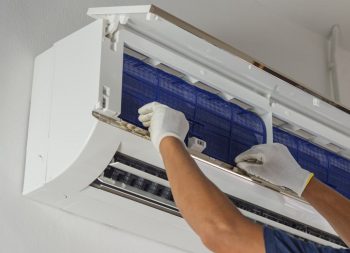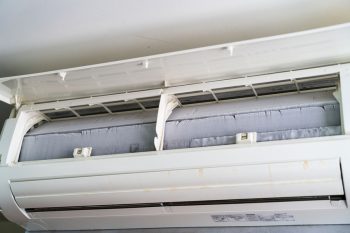
There are few things as frustrating as opening your dishwasher only to find it hasn’t drained properly. Standing water, unclean dishes, unpleasant odors, and slow drainage are all indications that your dishwasher drain needs to be emptied. In this comprehensive guide, we will walk you through the process of how to empty a dishwasher drain effectively and securely.
To empty a dishwasher drain, you first need to turn off the power and water supply. Remove dishes and racks from the dishwasher, then soak up any standing water with a towel or small bowl. Clean the drain filter and drain with a soft-bristled brush, and check the air gap cylinder for any blockages. Straighten out the drain hose, remove it and clean it thoroughly. Run the garbage disposal to clear any potential clogs, and finally, test the drainage system to ensure it’s working properly.
Why Is Regular Maintenance Necessary?
Regular maintenance of your dishwasher drain is crucial for several reasons. It prevents clogs, improves cleaning efficiency, prevents unpleasant odors, reduces the risk of water damage, and extends the life of your appliance. By emptying the dishwasher drain at least once every three months, or monthly if you use your dishwasher frequently, you ensure your dishwasher runs smoothly and effectively.
Signs That Your Dishwasher Drain Needs Emptying
There are several signs that your dishwasher drain needs to be emptied:
- Slow drainage
- Gurgling sounds
- Backups
- Standing water
- Dirty dishes
- Slow kitchen sink drainage
If you observe any of these signs, it’s time to empty your dishwasher drain.
Tools Needed To Empty The Drain
Before you start, gather the necessary tools:
- Small bowl
- Sink or dishpan
- Soft-bristled scrub brush
- Drain auger/snake
- Screwdriver (optional)
- Wire coat hanger or wire bottle brush
- Pliers
- Towels
- Bucket
Safety Precautions
Safety should be your priority. Before starting, make sure to disconnect the dishwasher from the power source and turn off the water supply. Wear gloves and use the proper tools to avoid any accidents or injuries.
Step-By-Step Procedure To Empty The Drain
Here are the steps to empty a dishwasher drain:
- Turn off the power and waterline
- Remove dishes and racks
- Soak up standing water
- Clean the drain filter and drain
- Check the air gap cylinder
- Straighten the drain hose
- Remove and clean the drain hose
- Run the garbage disposal
- Test the drainage system
Troubleshooting Common Issues
Despite your best efforts, you might face some issues while emptying the dishwasher drain. Here’s how to resolve them:
- Clogged filter: Clean or change the filter.
- Blocked garbage disposal: Run the disposal with cold water.
- Obstructed air gap: Clear any obstructions.
- Kinks or clogs in the drain hose: Straighten out any bends or kinks.
- Incorrect dishwasher detergent: Use dishwasher-specific detergent.
- Pump malfunction: Consult a professional.
When To Hire A Professional?
While emptying a dishwasher drain is a task you can do yourself, there are situations when you should hire a professional:
- Persistent clogging
- Unfamiliar sounds
- Risk of damage
- Recurring issues
In such cases, professional services like RooterMan, Eyman Plumbing, and Flow Pros Plumbing are available to help.
In conclusion, regularly emptying your dishwasher drain is an essential part of maintaining your dishwasher’s efficiency and extending its lifespan. By following this guide, you can effectively and safely empty your dishwasher drain and keep it running smoothly.
Frequently Asked Questions
How often should I clean my dishwasher filter?
It’s recommended to clean your dishwasher filter at least once a month to avoid clogs and maintain efficient operation.
What can I use to clean the dishwasher drain?
You can use a soft-bristled brush and a mixture of warm water and vinegar to clean the dishwasher drain.
Can I use a regular detergent for my dishwasher?
No, it’s advised to use only dishwasher-specific detergent. Regular detergent can produce too many suds, leading to leaks and other issues.
What should I do if I see water leaks from my dishwasher?
If you notice water leaks, it’s best to consult a professional. The leaks could be due to a broken seal, loose connection, or other issues that require professional attention.
What are the common reasons for a dishwasher not draining properly?
Common reasons for a dishwasher not draining properly include a clogged filter, blocked garbage disposal, obstructed air gap, kinks or clogs in the drain hose, incorrect dishwasher detergent, or a pump malfunction.
How can I prevent my dishwasher drain from clogging?
Regular maintenance is key to prevent clogging. This includes cleaning the filter and drain monthly, using the right detergent, and ensuring the drain hose is not kinked or clogged.
Can I run the dishwasher without a filter?
No, running a dishwasher without a filter can cause damage. The filter prevents food particles from reaching the pump and causing a blockage.











